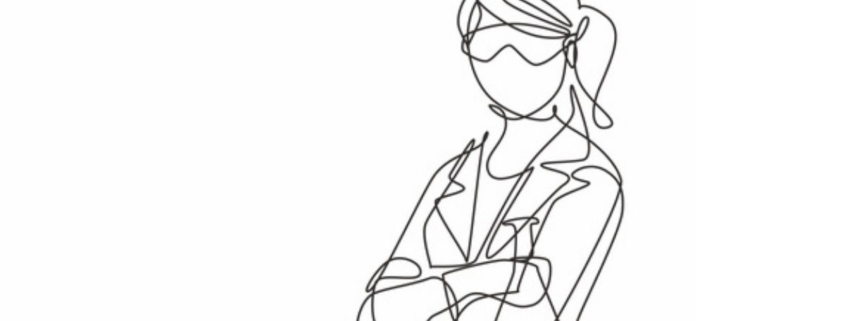What Do You See?
Last weekend, I took my daughters into Washington, D.C. to attend the opening of the Smithsonian’s If Then/She Can Exhibit, the largest collection of statues of women ever assembled. On a beautiful sunny Saturday afternoon, we toured through 120 life-size 3D-printed statues of women trailblazers in science, technology, engineering, and mathematics, and since it was the opening day of the exhibit, we also got to meet many of the real-life scientists who stood alongside their statues.
It was a powerful and— in some respects—overwhelming experience. For my girls, 11, and 8, to come face-to-face with so many women scientists, including women working on NASA spacesuits and writing Google code, to those studying nearby wildlife and faraway galaxies was incredible. Better yet for my girls, who both love science, it made the idea of being a “scientist” tangible.
The experience reminded me of an image I’ve often used in media training, in which we show two photos of the same person side by side, one in a traditional doctor’s coat and the other in ripped jeans, a t-shirt, and baseball cap. We’ve used this image to reinforce how powerful, but also how limiting, first impressions can be. Because our brains have been trained by society, media, and culture to “expect” visual cues related to certain professions, a spokesperson is more likely to gain the trust and attention of the audience if they “look the part.”
I’ve never been one to like the “looking the part” bit. But I can’t deny its truth. So, when it comes to challenging the stereotypes of what a scientist “looks like”, I’m all in. But stereotypes are stubborn things, and the idea of literally changing the way we see professionals in any number of fields doesn’t happen overnight.
Sometimes, in fact, changing the way we see takes 50 years or more.
For the past 50 years, a long-term National Science Foundation study has been asking boys and girls each year to draw a picture of a scientist. Right from the start, the bias in the children’s thinking was nearly universal: 99.4% percent of the drawings depicted a male scientist. Of the 5,000 drawings collected between 1966 and 1977, only 28 were of female scientists, all of which were drawn by girls. Thankfully, these perceptions are changing and in recent years have become far more balanced, with girls seeing themselves as scientists nearly 60% of the time now (even though boys still draw scientists as male 90% of the time.)
As the NSF researchers of the study said recently, “girls don’t see women as scientists, it’s more likely that they won’t see their future selves as scientists, either.”
While the narrative didn’t change early enough for me to see myself in a science field, it’s changed in time for my daughters to see themselves as such. And that’s something worth celebrating.
What stereotypes exist in your field that might be limiting the diversity of your team? Consider what you can do to change the narrative for your sector. And then, do something about it. Trust me, there’s a kid out there counting on you.
This is week 10 of the Finding The Words column, a new series published every Wednesday that delivers a dose of communication insights direct to your inbox. If you like what you read, we hope you’ll subscribe to ensure you receive this each week.





 Check out our new
Check out our new